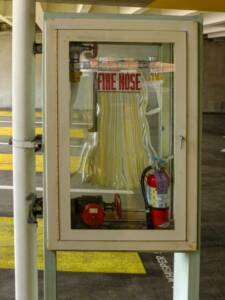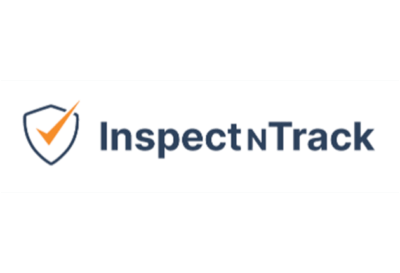The fire hose, one of the silent heroes of fire safety, is critical and often overlooked when it comes to preventing fires. When most think of fire safety, fire extinguishers and fire alarms are the first to come to mind and get the most attention. Despite this, fire hoses are the first line of defense in most industrial and commercial settings. With their importance, it is vital that they receive regular inspection, testing and maintenance so that they will work properly when needed most. With the importance of fire hoses in mind, here are some tips to ensure that your fire hose is in tip-top shape ensuring safety, compliance and peace of mind
Why Fire Hose Maintenance Matters:
There are a plethora of factors that can affect the performance of a fire hose; UV light, moisture, pressure fluctuations, chemical exposure and physical wear to name a few. Over time, if not noticed or addressed these conditions can lead to cracking, mold growth, coupling issues or burst risks. Not only is this extremely dangerous in the event of a potential fire, but it can also lead to hefty fines by the Authority Having Jurisdiction. Preventative measures are a lot more cost effective than paying fines or having an uncontrolled fire.
With that being said, here are a few tips to ensure fire hoses are ready to use and compliant:
Tip #1: Know the Code Requirements
Different types of fire hoses use different standards and it is important to know how different agencies enforce and regulate code.
- The NFPA creates codes which are the standards for fire and electrical safety.
- OSHA creates their own standards, but has the ability to enforce these guidelines.
- Local fire departments may also have their own inspection requirements
A general rule of thumb is that fire hoses should be visually inspected monthly and tested annually for pressure retention and function. Referencing standards created by the governing bodies above, you can ensure that fire hoses are being inspected in a frequency that falls under your specific requirements.
Tip #2: Make Visual Inspections Routine
Visual inspections should check for:
- Cuts, abrasions, or fraying in the hose jacket.
- Corrosion or damage to couplings and threads.
- Leaks at coupling joints.
- Kinks or signs of crushing from improper storage.
- Evidence of mildew or mold, especially if stored in humid areas.
Using a checklist or digital inspection tool can ensure that there is consistency in documentation of these issues. Apps like InspectNTrack allows for teams to conduct standardized inspections and report their findings, all while generating compliance ready reports.
Tip #3: Store Fire Hoses Properly
Even a brand new fire hose can degrade quickly if not stored properly. Below are some ideal storage conditions to ensure that your hoses last as long as possible.
- Dry, well-ventilated areas.
- No direct sunlight exposure.
- Hoses racked loosely, avoiding tight bends or pressure points.
- Couplings facing the same direction for ease of deployment.
A hose not following these tips will be more prone to cracking, mildew/mold and tangles. If caught early, most of these issues can be prevented altogether which eliminates the risk of failing inspection or having to replace a fire hose.
Tip #4: Digitize the Process
For those who try to manage inspections on paper, it is really easy to lose data, have inconsistencies and potential issues with compliance. Modern facilities are turning to digital solutions to eliminate this problem. One example is InspectNTrack, which is a mobile-friendly inspection and compliance software.
With InspectNTrack, you can:
- Schedule recurring fire hose inspections.
- Scan barcodes or QR codes for asset tracking.
- Record testing pressure, dates, and results in real-time.
- Automatically flag hoses for maintenance or retirement.
- Generate reports for internal audits or fire marshal visits.
Digitizing inspections helps ensure no hose goes unchecked and no record goes missing.
Tip #5: Train Your Team
No matter how thorough the policy and process is for inspection, it will not matter if your safety team is not properly trained. Below are some of the things that individuals should be looking for when performing an inspection.
- What to look for and how the checklist works
- Proper testing procedures
- How to log data in a consistent and accurate manner
- When to remove a hose from service.
Setting up an annual training can refresh even the most veteran safety inspectors and ensure that proper procedure is reinforced.
Final Thoughts:
With how important fire hoses are to overall fire prevention and safety, it is absolutely crucial that the proper inspection, testing and maintenance processes are followed. Facility managers can ensure that their fire protection systems are reliable, compliant and ready when it counts.
Don’t let fire hose maintenance become an afterthought. Stay proactive, stay compliant, and stay protected.
For more information of Fire Hose inspections, check out some of our other articles:


